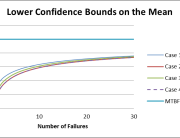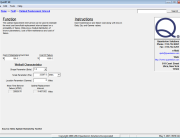The inherent (i.e., designed-in) RMQ of a product is influenced by the strategy defined by the RMQ Program. This strategy originates from the RMQ requirements and available company resources to design, develop, test, manufacture and support a product over its entire life cycle.
Optimizing overall RMQ program costs considers the overall affordability of the intended product, both from the manufacturer’s investment to achieve the required (or desired) levels of RMQ, and from the customer’s perspective in using the product (cost of ownership). There needs to be a balance between the amount of money/resources that a company can afford to invest to achieve profitable success in a competitive environment and the amount of financial “burden” that a customer can be expected to pay to buy and maintain that product.
An automobile that is characterized by “overly robust” RMQ performance (compared to competitors) will have a prohibitive price tag for most customers. The automobile manufacturer would need to invest significant resource to design in those performance levels and may never be able to recover that investment (i.e., make a profit).
An automobile that is characterized by “sub-standard” RMQ performance (compared to competitors) will have invested significantly less in the inherent design and development of the vehicle. They may sell more cars at a cheaper price, and make money on post-warranty service and repairs, but the customer may have to invest significantly more (over the years) than would have been required to purchase the more expensive vehicle. The manufacturer will profit, but at what overall cost (loss of customer base/market share, potential liability, etc.)?
Activities that can help to optimize overall RMQ costs include:
Affordability
Quality Management
Reliability Centered Maintenance
Root Cause Analysis
Warranty Planning



